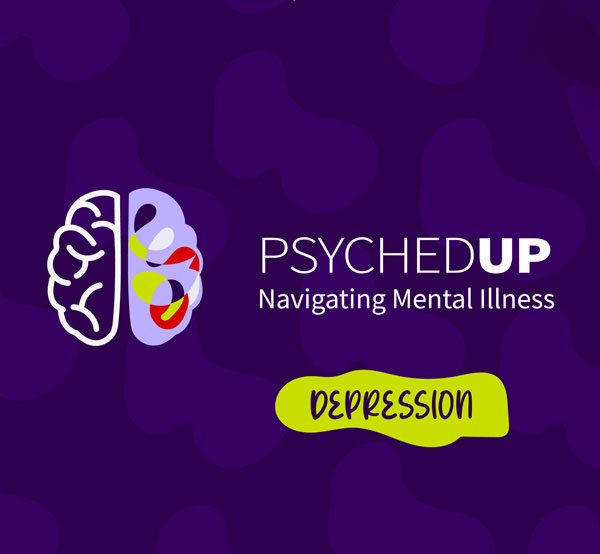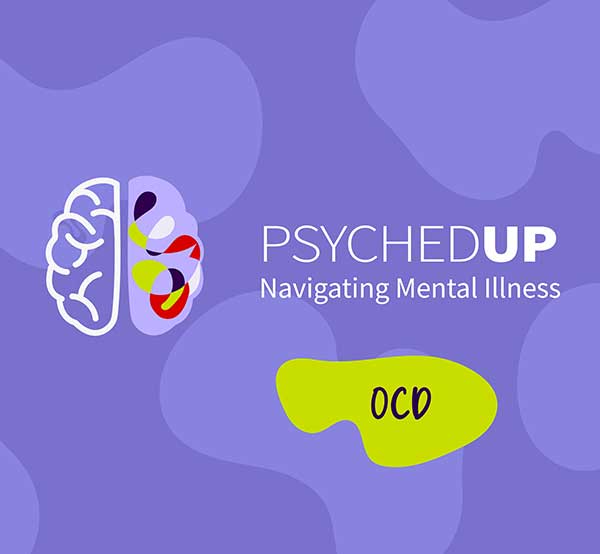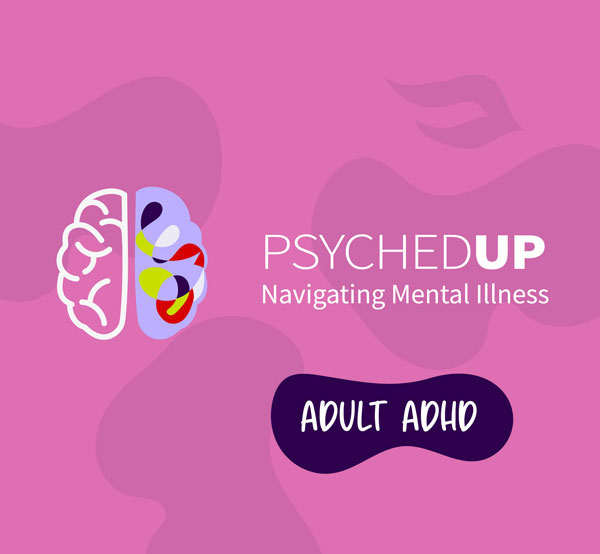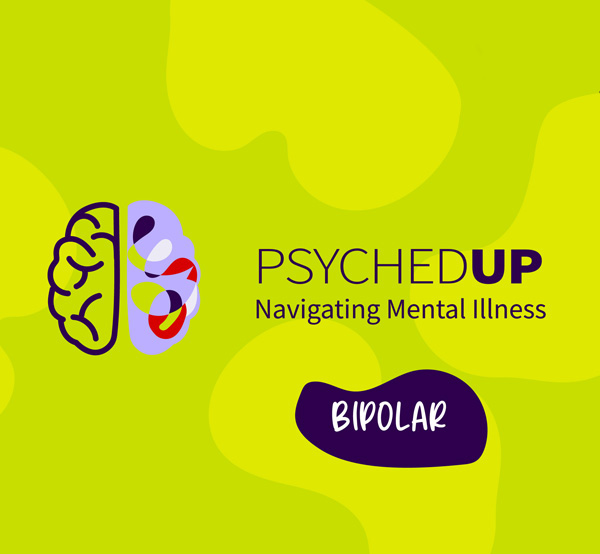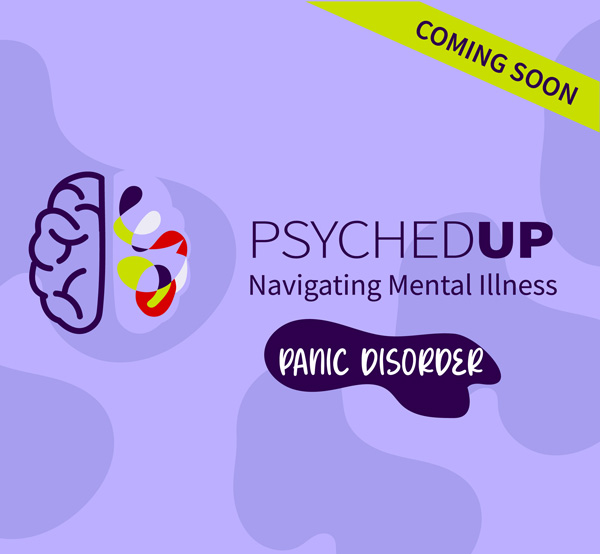
Episode 5: This is PTSD
What is post traumatic stress disorder? Do childhood traumas make some of us more susceptible to it than others? How can we tell the difference between emotional trauma and PTSD? In this episode Dr. Diane McIntosh answers these questions and many more. Chelan is our guest and she shares her experience with PTSD and the steps towards a diagnosis and treatment. Dr. Randy Mackoff and Dr. McIntosh explore the benefits of talk therapy and the latest advances in medication for treating PTSD.
Listen to This is PTSD on your favourite platform:
This is PTSD Podcast Transcript:
00:00:00
Dr. Diane McIntosh: On this episode, we’re going to focus on PTSD. But in doing so, we’ll talk about some experiences that might be difficult or upsetting for some people to hear, please listen with care.
00:00:12
Chelan: Every night to this day, that’s where my PTSD lies is in my nightmares. I have not had a good night’s sleep in 22 years. Every night I go to bed, I fight for my life, I fight for my child’s life, I fight for someone’s life besides my own every time I close my eyes. It is something I don’t wish on anyone.
00:00:35
Dr. Diane McIntosh: On TV and in movies, PTSD is often portrayed as flashbacks. But this, what you just heard is the most common way PTSD is experienced, it’s the nightmares, it’s not being able to sleep.
00:00:51
Clip: No, no.
00:00:52
Dr. Diane McIntosh: That’s where PTSD most often invades and disrupts lives. In this episode, I’ll break down PTSD symptoms, diagnosis, causes and treatments. I’m Dr. Diane McIntosh and you’re listening to PSYCHEDUP. On this show, each episode will focus on one mental illness, today it’s PTSD or post- traumatic stress disorder. As a psychiatrist, I want anyone experiencing this illness to be able to hear these stories and know there is a path ahead. My goal is to educate, destigmatize and inspire. Welcome to PsychedUp.
I’ve treated many patients with PTSD both through my regular psychiatric practice as well as during my time as a civilian working for the Canadian military. PTSD is a condition that is triggered by exposure to a terrifying or horrifying, potentially life- threatening event either as a witness or through direct personal experience. PTSD commonly includes re- experiencing symptoms where people feel like they’re actually re- living the experience again. This can come in many forms, intrusive recurrent memories of the traumatic event, nightmares or flashbacks. These symptoms understandably provoke intense distress and anxiety.
I’ve seen it myself, I’ve treated soldiers who returned from war zones and then were easily triggered by sounds or smells when they got home. For instance, a soldier hears a car backfire and runs for cover because they’re immediately transported back to a firefight. Being at their kid’s soccer game is just too anxiety- provoking because an open field might make them feel vulnerable to snipers or maybe land mines could be buried in the grass. Of course, that’s not the case but having PTSD can make normal day- to- day life experiences intolerable. But PTSD rarely results from a single traumatic event, I’ve had patients experience a minor car accident or an inappropriate physical interaction and that ultimately provoked the onset of their PTSD. That minor event on its own is not enough to meet the criteria for PTSD but, if you look at that person’s history, often you’ll see that they have a number of traumas in their background and that minor event was actually the straw that broke the camel’s back.
I think of trauma as like having rocks in your pocket, each trauma, each rock slowly weighs you down until, finally, you’re underwater, you’re overwhelmed. Childhood trauma is a significant risk factor for the development of PTSD. So, if you have a history of childhood abuse or chaos or neglect, that means you’ve started life with a lot of rocks in your pocket and a few pebbles can unfortunately tip the scales. But of course, childhood trauma does not automatically mean you will develop PTSD, we’ll get more into this soon.
For now, I want to share what causes PTSD, what’s going on in your brain. When something stressful happens, your brain and your body jumps into action. The fear center of your brain, which is called the amygdala, provokes the nervous system to go into overdrive, chemicals are released in the brain and that allows you to react fast, this is called that flight or fight response. You have increased heart rate, increased blood pressure, more blood flows to your muscles so you can run, you’re hyper alert, you’re ready to act. What also happens is that cortisol is released, this is the hormone that helps your brain to recover from stress and get back to normal quickly.
But with PTSD, your brain doesn’t self- regulate, it doesn’t get back to normal, you stay in that fight or flight mode. The cortisol just keeps flowing and that constant high level of cortisol, without any danger present, leads to physical and mental health issues. It actually changes your brain’s structure and how it functions. This is how PTSD damages your brain and leads to the chronic symptoms that are so difficult to endure. It’s a horrible state and it’s also why suicide rates are so high in PTSD but, with an accurate diagnosis and proper treatment, it does not have to be this way.
Okay. So, in order to get a sense of what it feels like to actually have PTSD, I’d like to introduce you to someone.
00:05:46
Chelan: My name’s Chelan, I am 51, I’ll be 52 here in a couple months. I am a mother of two – a 20-year-old boy and a 22-year-old girl. I like video games, I’m pretty nerdy, casual, laid-back person. I’m vanilla, there’s not a lot to me.
00:06:08
Dr. Diane McIntosh: But of course, that is not true, Chelan has a lot going on. She has her family, her pets, her community and she also has PTSD.
00:06:17
Chelan: Basically, what happened to me or what started my PTSD was I had been in a marriage, it was just clear that it just wasn’t going to work. My husband at the time was in the master bedroom and I had moved into the guest room down the hall with my daughter, our daughter. So, as the 15th of the month loomed closer, that’s when I was going to be moving out, my husband was getting increasingly irritable.
00:06:45
Dr. Diane McIntosh: But she had no idea what was coming next.
00:06:48
Chelan: The door kicked open and flicked the lights on and he had a rifle pointed at my head and shots were fired.
00:06:56
Dr. Diane McIntosh: Thankfully, Chelan and her one-and-a-half-year-old daughter were not struck by bullets but, regardless, that evening was understandably the worst night of her life.
00:07:07
Chelan: There was five to six hours of rape, abuse, fighting for my life, fighting for my daughter’s life.
00:07:16
Dr. Diane McIntosh: Chelan’s attacker wanted time to think, he made her lay down with him with the baby in between them. Chelan says she passed out but, about 25 minutes later, she awoke to find that he was asleep. She grabbed her daughter and made a run for it, willing him to stay asleep long enough for them to get away. They made it, they escaped. Chelan and her daughter drove to a trusted friend’s house. Once there, she was taken to hospital and she was treated for her injuries. The police were called.
00:07:48
Chelan: They then kicked the front door open and blew up my house basically.
00:07:52
Dr. Diane McIntosh: Then her husband took his own life.
00:07:54
Chelan: And I became a single parent in a blink of an eye and my world was irreparably changed.
00:08:04
Dr. Diane McIntosh: Chelan was treated for her physical injuries but not for her mental ones. She had to go back to that same house, fix it up and keep going for her and her daughter.
00:08:15
Chelan: I was in survival mode. I didn’t have time to look at my mental health or put my life under a microscope as to what was going on and how I was behaving, I was just coping. I was just trying to get through every day to see the next morning.
00:08:34
Dr. Diane McIntosh: To be diagnosed with PTSD, the symptoms have to persist for at least a month but it took about a year and a half before she realized I’ve got a problem and it’s not going away.
00:08:45
Chelan: I started going to my doctor saying something was wrong, I didn’t know how to put my finger on the what’s exactly other than I had lot of anger. The one that I always remember is standing in Subway, there’s four people in front of me and I was waiting to order my food and my fists were clenched because I was ready to hit the person in front of me for no reason other than I was angry.
00:09:15
Dr. Diane McIntosh: It’s really important to know that PTSD isn’t the only mental illness that can result from exposure to a traumatic event. Depression, anxiety symptoms including panic attacks and substance use disorders are also potential problems that can arise. And like all mental illnesses, exposure to trauma can provoke irrational, sometimes horrific thoughts and feelings that can be relentless and intrusive and sometimes they’re even about the ones we love the most.
00:09:45
Chelan: I hated my daughter, she was an innocent victim, I wanted nothing to do with her. She was a connection to something I wanted to forget but it wasn’t even a conscious symptom, it took me the better part of 12 years to fix that.
00:10:03
Dr. Diane McIntosh: Common symptoms of PTSD can include intrusive memories, they keep coming back, they’re unexpected, they’re relentless. There’s avoidance, staying away from people, places and activities that might trigger memories of the event. And more than feelings, there’s also this reactivity, irritability, angry outbursts, behaving recklessly or in a self-destructive manner. I’ve seen that present as hypervigilance or having trouble concentrating or sleeping, everyone with PTSD has trouble sleeping.
00:10:38
Chelan: The nightmares were unstoppable. And I’d always been a very happy person, always very positive and I wasn’t. My humor was gone, used to love to cook and bake, gone. Video games, gone. I didn’t want any contact with people. The end of the day, I didn’t want to live the way I was living and, if it wasn’t going to change, then I wasn’t going to continue.
00:11:05
Dr. Diane McIntosh: It was a horrible place to be but, fortunately, Chelan’s doctor referred her to a psychiatrist who understood her symptoms.
00:11:14
Chelan: She listened to my story and basically told me that she was going to help me and that this was what it was, it was PTSD and it was treatable.
00:11:25
Dr. Diane McIntosh: Thankfully, it really is. With time and a willingness to work together, it is treatable so let’s get into that. No one would argue that Chelan endured a traumatic experience, however, it’s important to remember that trauma is subjective, what is traumatic to one individual might not be traumatic to another. It is critical to understand a person’s history, their life experience and this is particularly important to understand if you’re someone who diagnoses and treats mental illness. So, as always, I’m here with my friend and colleague, psychologist Dr. Randy Mackoff. Among his many gifts, Randy is a talk therapy expert while I, as a psychiatrist, focus on prescribing medications for severe mental illnesses. Randy, thank you for being here.
00:12:17
Dr. Randy Mackoff: Well, thank you for having me, Diane.
00:12:19
Dr. Diane McIntosh: So, what are some of the greatest risk factors from your perspective for developing PTSD, the diagnosis of PTSD?
00:12:27
Dr. Randy Mackoff: Well, from my perspective, obviously, exposure is important. How close you were to the event, the traumatic nature of the event, how life-threatening and how perceived life-threatening it was is very, very important. But bringing to the situation are early childhood experiences of abuse, neglect and trauma exposure as a child increases the risk of experiencing the full diagnosis of post-traumatic stress disorder. With little doubt in my mind, those are the key features. Which doesn’t mean that someone does not develop PTSD with an absence of that in their history but, with that in their history, it really puts somebody at risk of developing PTSD.
00:13:11
Dr. Diane McIntosh: That is so true. Early experiences of abuse, trauma and neglect actually appear to impact how our genes work and there’s evidence of this when studying rats. Rat moms are loving and nurturing moms while rat dads are deadbeat dads so most of the studies are in rat moms. The high-licking moms, the ones who lick their pups a lot, have stronger, healthier rat babies while, low-lickers, their pups tend to be smaller and less aggressive. Licking and positive attention determines how babies develop physically and mentally. Trauma changes the brain.
00:13:50
Dr. Randy Mackoff: I think it’s important, Diane, from my perspective, to recognize though that trauma symptoms are not necessarily post-traumatic stress disorder. The post-traumatic stress disorder has a lot more to it than having a trauma reaction. I’ll give you an example at a personal level. I’m a former police officer, interestingly, and many, many years ago, I was working a night that a police officer was killed, somebody who I knew well. And 15 years later, I walk into my office at downtown Vancouver and I look out into a building where I was sitting when I heard the broadcast of a member being shot and I learned very soon after that he’d been killed. Instantly, tears came to my eyes and I felt quite upset.
That is not PTSD, that’s a trauma reaction to the memory of a traumatic event. And I think we have to differentiate because, when it’s PTSD, you have re-experiencing, you have hypervigilance, you have avoidance, you have emotional regulation difficulties, you have difficulties that affect important areas of functioning, that is PTSD and that is different than having a trauma symptom.
00:14:56
Dr. Diane McIntosh: I have seen many occasions where a caring nurturer or a therapist opens a can of worms and then completely destabilizes that individual when, actually, they were coping very well, they were functioning well. They had a trauma but they had been able to package that up in a manner that was not causing them day-to day symptoms and really impairing their functioning as a result of opening a can of worms and not having the ability to put them back together again.
00:15:27
Dr. Randy Mackoff: Absolutely, because they bring everything back into the present as opposed to where it actually belongs which is the past. And that’s one of the things, Diane, is that often these past events get re-experienced as being present and that is what becomes so very frightening. One of the early lines that I use, and I use this repeatedly, is that was then and this is now. And it seems so simple but it is an important way of thinking because you’re no longer in that situation. In that moment, yes, it was very, very frightening, yes, your life was in danger, et cetera, but now is different and it’s separating those. And I think that we’ve got a lot of evidence that supports that that approach is beneficial.
00:16:05
Dr. Diane McIntosh: It was actually through PTSD that I really learned about the power of talk therapy. When I learned about psychotherapy for PTSD, the most common form was cognitive behavioral therapy but specifically what was called prolonged exposure. So, the idea here is that patients are asked to relive every aspect of their trauma, to recall every sensation associated with it, essentially re- experiencing all of their thoughts and feelings and their sensory experiences associated with the trauma over and over and over again.
The theory is the patients will eventually habituate to the fear. In essence, re- exposure helps them to learn that the memories and reminders aren’t dangerous. Over time, the strong fear response to the traumatic memories does lessen and no longer control the patient’s life. So, I’ve had patients that did exceptionally well with this kind of therapy and others who really did not benefit. Randy, what are your thoughts on CBT and specifically when prolonged exposure is most useful when treating patients with PTSD?
00:17:14
Dr. Randy Mackoff: So, clinically, just from my experience, I think that exposure can be really effective if the traumatic event is something very specific. So, you have somebody who’s working in a mill and they lost two of their fingers on a piece of machinery. Because that’s specific, that doesn’t translate into other parts of the world. So, exposure, first of all, visualizing the exposure, you’re then going into the mill and then standing in front of the machine, hearing the machine. Eventually, the person has that high level of anxiety, the fears and then exposure, they realize they’re no longer in danger and they have ways of dealing with that.
There’s two different approaches to that type of exposure, one is to let the person go through that without any calming strategies in place. Others would say, “Look, let’s teach the person some relaxation skills, they go into that environment and then they can keep themselves in a calm state when they go into that environment.” Either way is exposure.
00:18:08
Dr. Diane McIntosh: Randy, can you talk a little bit about trauma being personal and that experiences with trauma are subjective that, for one person, those kinds of experiences can have meaning but, for other people, they don’t.
00:18:23
Dr. Randy Mackoff: A fancy word for meaning is what we call it the phenomenological component of post- traumatic stress disorder. In other words, what is the meaning of the event to the individual.
00:18:33
Dr. Diane McIntosh: And is that why, when something is really personal, protracted, it’s ongoing, sexual, demeaning, that’s why those kinds of traumas are more likely to result in PTSD because the meaning is so deep? This is someone I trusted or this is my body has been interfered with, that’s what you’re talking about?
00:18:55
Dr. Randy Mackoff: That’s what I’m talking about. So, when you take a look at sexual offenses and sexual assault and its contribution to post- traumatic stress disorder, think about that, you’re not safe under any circumstances. You had no control over what was happening to your body that’s being imposed by somebody else in a manifestation of anger, power or control and then you also have your own life. And so, you may be in a relationship and, within that relationship, there’s going to be some sort of sexual contact. But all of a sudden, now the meaning of that sexual contact gets corrupted, gets influenced by the violation that was imposed upon you by somebody else and so there’s so much meaning attached to that, most definitely.
00:19:36
Dr. Diane McIntosh: Many people who know anything about PTSD have probably heard about EMDR or eye movement desensitization and reprocessing. How does it have anything to do with talk therapy?
00:19:46
Dr. Randy Mackoff: Yeah, so EMDR is a treatment approach which is called a trauma treatment approach and there is some evidence that it can be very effective with PTSD, there’s also some evidence that EMDR can be harmful to people as well. It’s like everything else, there are things that are advantageous to it and there’s things that are a disadvantage. But the essence of it is a person is asked to recall the traumatic event while, at the same time, moving their eyes back and forth and so, it is really a modification, in my opinion, of exposure therapy.
Now, there’s all sorts of debate as to whether the eye movement makes a difference or not and I can’t separate when I look at the literature whether it does or doesn’t. I think for some people that it can be effective, it is used quite widely. It’s intended to be a brief therapy and so I become very skeptical when someone says I’m in my 24th EMDR session and I’m still working on my trauma. To me, that tells you that the EMDR is not working under those circumstances.
Diane, medication for PTSD and accompanying disorders that follow from PTSD, what’s your approach?
00:20:44
Dr. Diane McIntosh: So, Randy, you know that I think talk therapy is a crucial part of PTSD treatment but it’s also important, especially if someone is quite ill, to consider medications as part of treating PTSD symptoms. Sometimes medications are essential to get the patient to a place where they’re actually able to attempt the hard work of talk therapy which requires you to be able to focus, to remember and to practice new skills. As far as prescribing for PTSD, we most often use antidepressants which are helpful for PTSD symptoms as well as depression and other anxiety symptoms that are so often a part of PTSD. Some antipsychotic medications, which are unfortunately named because they work for so many other disorders, are very helpful when prescribed along with the antidepressant in severe PTSD.
Medications like aripiprazole and brexpiprazole have data that demonstrate their benefit. It’s really important to know that disorders like PTSD can be very difficult to treat, it often takes time to find that right treatment. Patients with severe anxiety are also very sensitive to side effects so I often take a start low, go slow approach to all medications but aim to get all of the symptoms managed. That’s the best way to help my patient to get back to full functioning as quickly as possible.
00:22:10
Dr. Randy Mackoff: Nightmares that are chronic, ongoing really increase the risk of suicide. People are not getting sleep, they can’t fall asleep. Medications for nightmares?
00:22:19
Dr. Diane McIntosh: Sleep is, I think, one of the greatest challenges associated with PTSD. And having treated PTSD for nearly 25 years, I can say I don’t think I’ve met a patient who has PTSD that does not have significant sleep symptoms and it’s sometimes challenging to get my colleagues to actually prescribe for sleep but helping people get to sleep and stay asleep can be extremely helpful. Sometimes I use medications that can break a nightmare cycle and then going back to a more longer- term sleep strategy. We have some newer medications actually that are safer than the older sleep medications. If one sleep treatment doesn’t work, keep talking to the person who’s prescribing.
And one other really important point, Randy, there is no data that PTSD is adequately treated with THC, even CBD. So, I really recommend that anyone who is treating their PTSD with alcohol or cannabis needs to talk to their doctor about another treatment. We know that actually using cannabis as a treatment for PTSD can make those symptoms worse, can worsen your sleep- over time and what happens is people say, “Okay, I don’t like how I’m feeling now with using cannabis all the time, I’m going to try to taper it off or stop it,” and what happens? They don’t sleep and their anxiety is worse so they say, “See? The cannabis was working,” when, in fact, the cannabis was not working, you’re having withdrawal.
So, if you are using cannabis but you’re still very symptomatic, starting a new treatment, an antidepressant treatment, maybe having to add an antipsychotic and slowly stopping the cannabis is the only way you’re going to find your way through to getting your symptoms under great control.
00:24:01
Dr. Randy Mackoff: Yeah, I’m so in agreement with you, Diana. The other thing is that, with any substance use, whether it’s alcohol, whether it’s cannabis, it’s not restored. Their brain’s not getting bathed in the proper chemicals at the right phase of sleep and that’s problematic.
00:24:12
Dr. Diane McIntosh: It’s a critical point because nothing gets you to sleep quite like alcohol and nothing messes with your sleep quite like alcohol, your usual sleep structure is very much impacted by alcohol. So, so many people who have struggled with PTSD have trauma- related disorders, whether it’s depression or anxiety, do struggle with substance use and turn to cannabis or alcohol to manage their symptoms and they make your symptoms worse.
00:24:37
Dr. Randy Mackoff: Absolutely.
00:24:38
Dr. Diane McIntosh: Thank you, Randy.
00:24:40
Dr. Randy Mackoff: Lots of good information. Thanks, Diane.
00:24:46
Dr. Diane McIntosh: Chelan was fortunate to find a psychiatrist she connected with and trusted but finding the right treatment for her PTSD still wasn’t easy.
00:24:54
Chelan: I’m not going to lie, it was, jeez, a good five years of ups and downs and pill changes and different therapies before I knew I was on the right path. I was in and out of psychiatric wards, it was not an easy journey but those trips were there to save me. It wasn’t perfect, it wasn’t shiny but I could see the light at the end of the tunnel that, everything that we had done, the treatments, the medication, the therapy was working.
00:25:28
Dr. Diane McIntosh: Five years is a very long time to play around with medication and therapies but Chelan stuck with it.
00:25:35
Chelan: I just had to trust I could get there, that I needed to dig deep and look at the big picture and trust in the process. And because I wanted to wake up, I wanted to see my children grow up, I did it because the alternative was a very dark hole I didn’t want to go back down.
00:26:00
Dr. Diane McIntosh: So, decades after that horrible event that changed her life forever, she’s happy. She lives a quiet life in a quiet place.
00:26:09
Chelan: Now, I don’t have as many flashbacks. I still live with my nightmares, I don’t think that’s ever going to go away. You can’t focus on the bad because life is hard sometimes and, if you can just find the silver lining in anything, it makes life worth living. For me, it’s very important just trying to find the happiness.
00:26:38
Dr. Diane McIntosh: Find the happiness, this is such an important message because things happen to us in life that we cannot control.
So, I’d like to take a second for a segment I like to call Shrink Wrap. To make sure you understand some of the context of PTSD, remember those rat moms, the high lickers and the low lickers I talked about earlier? Well, trauma at a young age does take its toll, that’s true. But something that’s really important to keep in mind is your future is not set in stone, it is not predetermined. If you did have a difficult childhood, that means you just need to be more vigilant with your mental health. Knowing what to watch out for, seeking treatment when something is happening, that’s the game changer. You may not be able to change the past but you can control your future. As Randy said, that was then, this is now.
Part of getting educated of understanding PTSD is following the good advice of people like Chelan. So, if you think you might have PTSD …
00:27:41
Chelan: Don’t do it alone, it’s too big of a monster to do it alone. Don’t shut yourself down, don’t shut yourself out. It will gnaw at you, yes, it will always be there in some sense later on but you can beat it.
00:28:00
Dr. Diane McIntosh: I say it in every episode and that’s because it’s true, there is always hope, there is always a path ahead.
00:28:07
Chelan: Just try and come up for air and breathe, it will pass. The memories will fade and it does become livable and, eventually, the livable becomes happiness.
00:28:30
Dr. Diane McIntosh: This is PSYCHEDUP, an original podcast from RAPIDS Health. If you know anyone who has PTSD or you love someone who does, please share this episode with them. And if you think you might have PTSD, please reach out to your primary healthcare provider and ask for help, PTSD can be treated. And if you like what you’ve heard, please follow or rate the show, it helps other people who might need guidance find us as well. Until next time, I’m Dr. Diane McIntosh.

